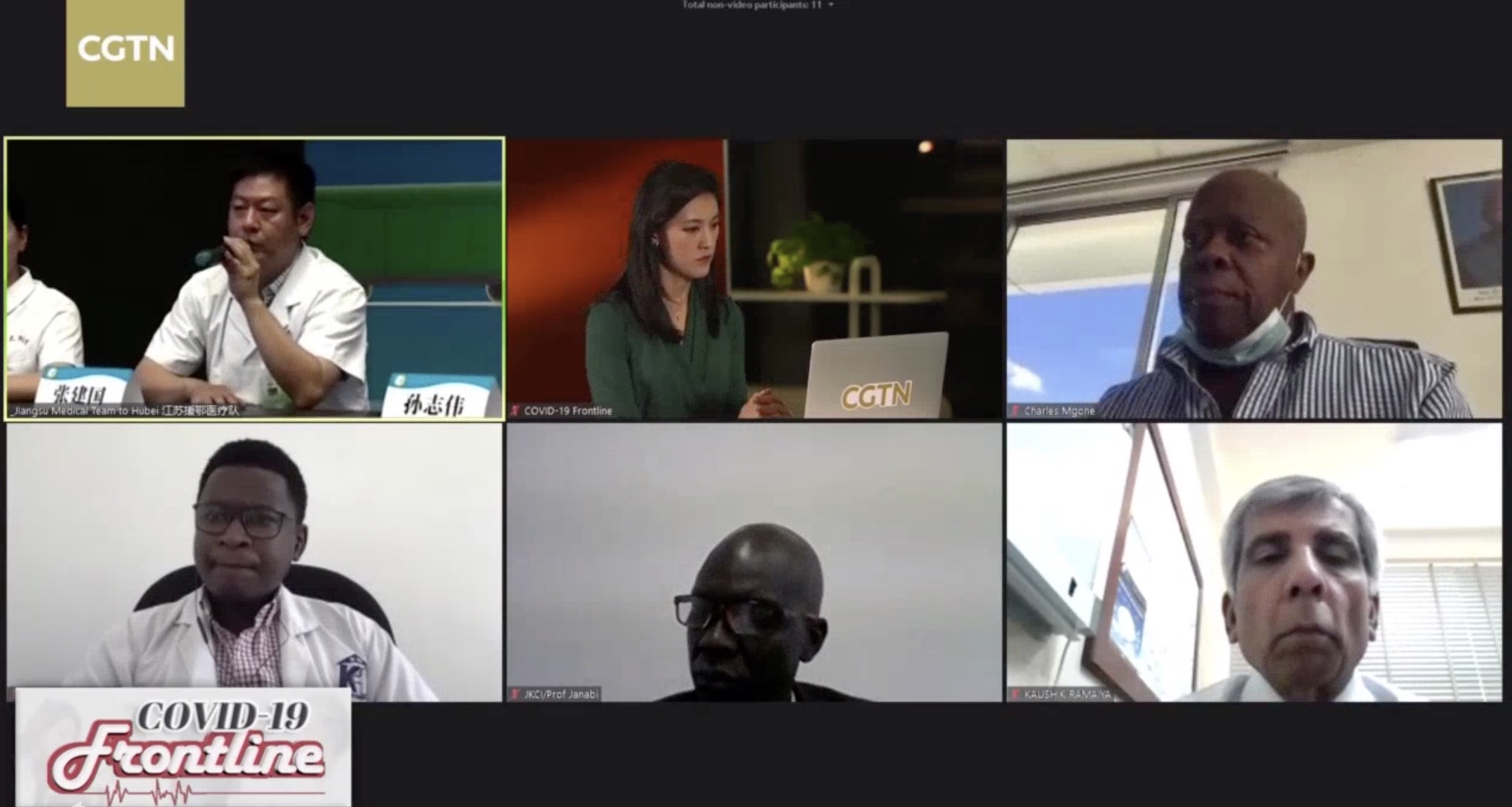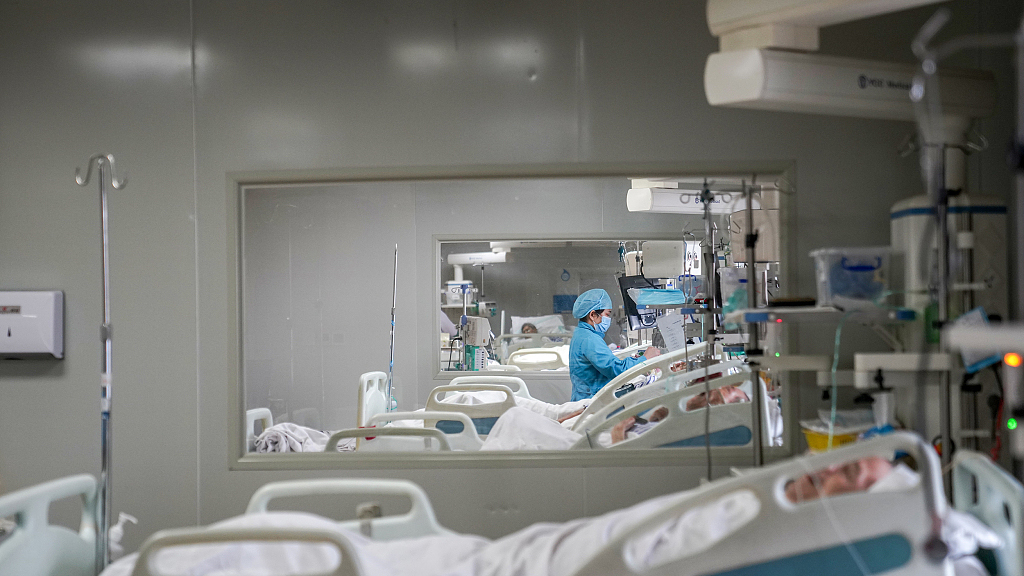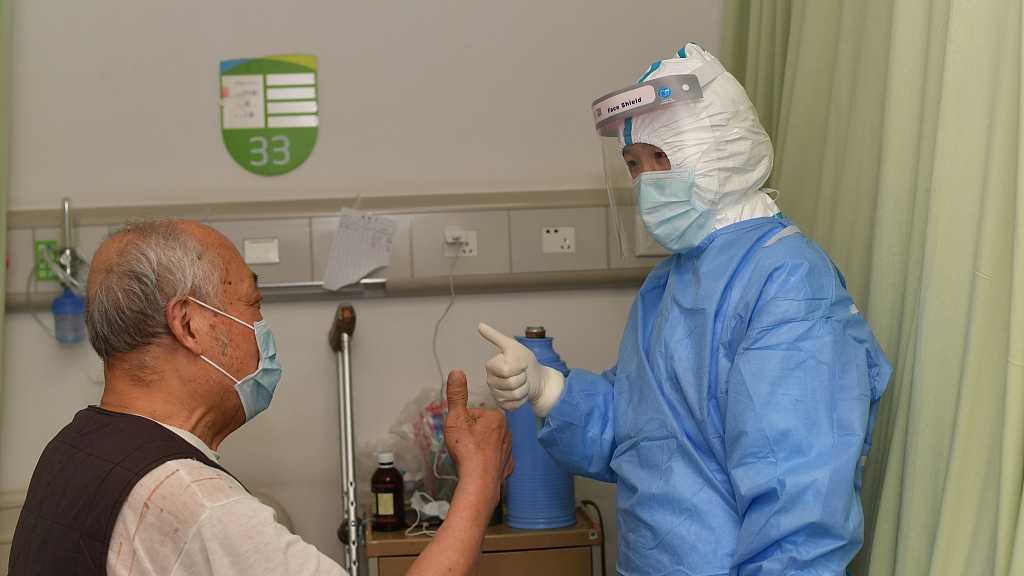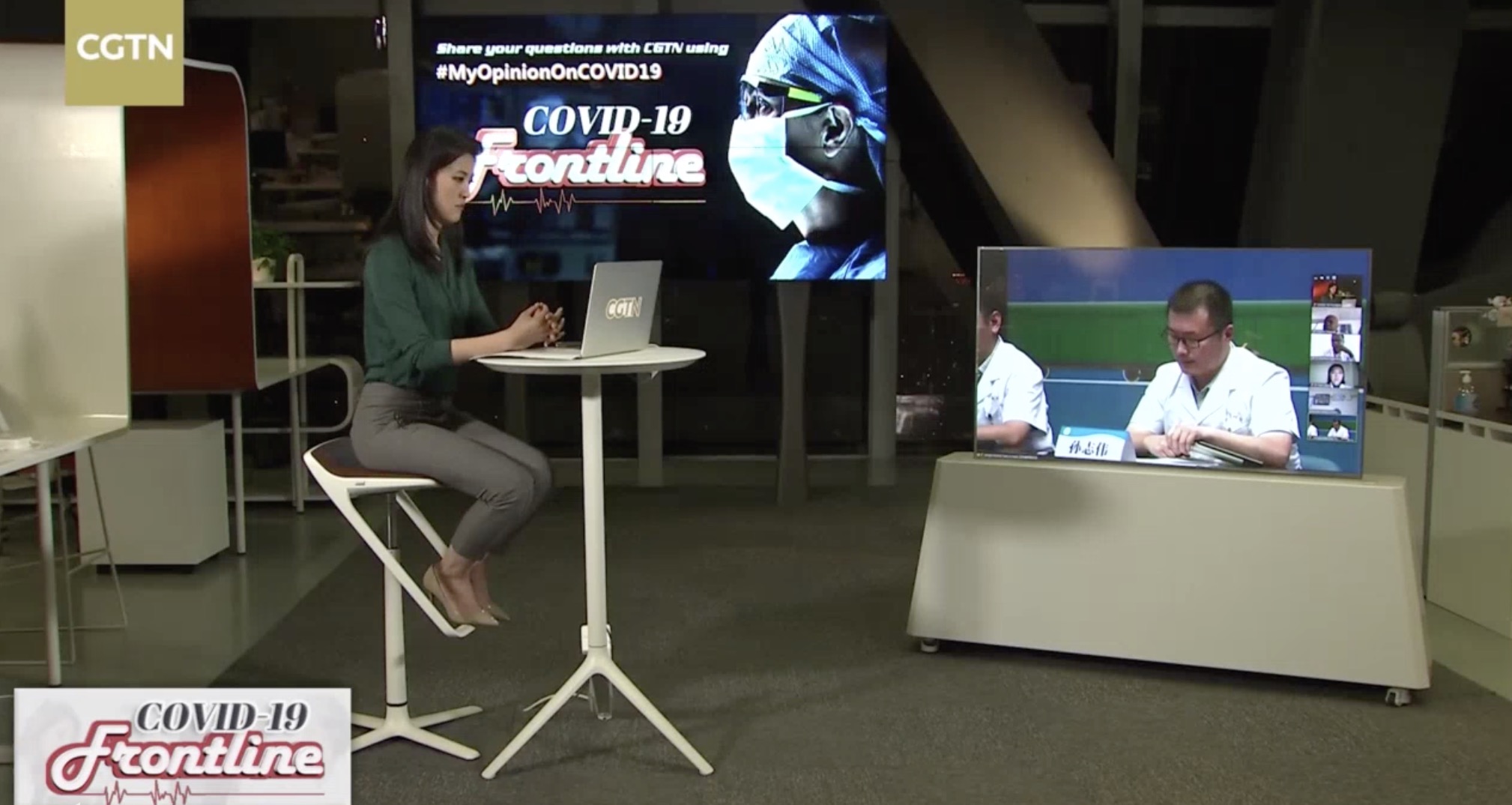Editor's note: On March 12, 2020, the World Health Organization (WHO) declared COVID-19 a pandemic, and as of Thursday (May 28), about 200 countries and regions have confirmed a total over 5,491,000 cases, according to the WHO. On CGTN's live program "COVID-19 Frontline," we invited medical workers and experts from China and other parts of the world to share their experiences and take questions from social media, in the hope of providing more information for those who are battling against the pandemic.
In the latest episode of CGTN's livestream program "COVID-19 Frontline" held on Wednesday, May 27, CGTN invited experts from east China's Jiangsu Province who joined frontline medics in Hubei Province during the anti-COVID-19 battle, to share their first-hand COVID-19 treatment experience with their Tanzanian peers.
Live: Chinese frontline doctors share COVID-19 treatment experience with Tanzania
The COVID-19 pandemic has spread to 54 countries in Africa. As of Thursday, more than 500 confirmed cases and 21 deaths have been reported in Tanzania.
Yan Xiaohong, head of the leading group of Jiangsu University on the COVID-19 control and prevention and president of Jiangsu University, said Jiangsu sent almost 3000 medical workers to support Hubei Province, which is No.1 in China. Both Yan and Kaushik Ramaiya, consultant physician and chief executive officer of Hindu Mandal Hospital, expressed withes to cooperate further to fight COVID-19 together.

Chinese frontline doctors share COVID-19 treatment experience with their counterparts from Tanzania. /CGTN
Chinese frontline doctors share COVID-19 treatment experience with their counterparts from Tanzania. /CGTN
Clinical progression of patients with COVID-19
Kaushik Ramaiya said there are mild COVID-19 cases, moderate cases, and severe cases. So he wanted to know the clinical indicators of the transition from mild to critical cases based on frontline doctors' experience.
Huang Hanpeng, member of the first batch of Jiangsu's medical aid team to Huangshi, Hubei Province, said there are several key indicators such as when chest CT examination shows the shadow on the lung deteriorates dramatically in a short period; when the pulse oximeter reading is below 93 and when a patient has respiratory failure.
01:51

The treatment of COVID-19 patients with underlying diseases
Mukiza Ngemera, doctor of Kairuki Hospital, Tanzania, said some COVID-19 patients also have chronic obstructive pulmonary diseases or have symptoms of pulmonary fibrosis. So he wanted to learn more about the treatment of these kinds of patients.
Sun Zhiwei, member of the first batch of Jiangsu's medical aid team to Wuhan, said the underlying diseases include high blood pressure, diabetes, asthma, and chronic obstructive pulmonary diseases. More than 60 percent of COVID-19 deaths are associated with hypertension, so the control of the blood pressure is critical. Based on previous studies by multiple medical teams in China, ACEI and ARBs should be avoided when treating hypertension, because they increase the level of angiotensin. Calcium Channel Blockers (CCB) and diuretics are suggested for treatment instead. If hypotension occurs in blood pressure control, antihypertensive drugs should be stopped immediately to avoid unnecessary tissue and organ injury.
"People with diabetes are more susceptible to COVID-19 due to their compromised immune systems," said Dr. Sun. So it's necessary to control the blood sugar. Blood glucose is typically targeted at 8 to 10 millimoles per liter.
"At the same time, there are many irritating disinfectants in the hospital, which may induce or aggravate asthma and other respiratory diseases," Dr. Sun added.
02:31

How to predict and manage cytokine storm?
Charles Mgone, vice-chancellor of Hubert Kairuki Memorial University, asked about the signs of cytokine storm and if there is any treatment in this regard.
Dr. Huang Hanpeng said elevated levels of IL-6 is a potential biomarker that is associated with cytokine storm. The treatment includes applying IL-6 blocking antibody tocilizumab, also known as atlizumab, or blood purification, which can reduce inflammatory mediators from the plasma of the patients. Another treatment is stem cell therapy which not only can reduce inflammation, but also plays an anti-fibrosis role. If the patient's condition deteriorates sharply, a short course and low-dose of the hormone will be used.

CGTN's livestream program "COVID-19 Frontline" held on Wednesday. /CGTN
CGTN's livestream program "COVID-19 Frontline" held on Wednesday. /CGTN
The use of hormone treatment
Dr. Kaushik Ramaiya asked about the dose of hormones and when to start and stop using hormone interventions.
Dr. Huang said for patients with mild and moderate symptoms, a hormone is not used. For patients whose condition deteriorated sharply and caused by cytokine storm, low-dose of hormone is used for about three to five days.
In later episodes of "COVID-19 Frontline," more frontline doctors and experts from Wuhan will join in to share their experience with their colleagues from other parts of the world. If you have any questions regarding COVID-19, you can share it with us using #MyOpinionOnCOVID19 on Facebook.
Videos by Zeng Hongen
Cover image by Du Chenxin